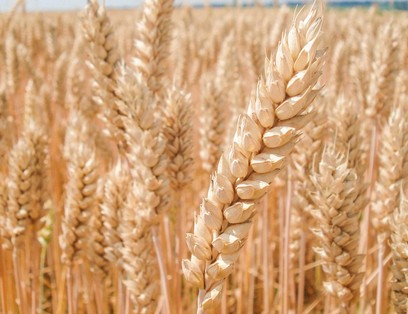Afghanistan: food security snapshot

Planting of the 2024 winter wheat crop, accounting for the bulk of annual production, finalized in November 2023 and harvesting started in early May 2024. Poor cumulative precipitation amounts (about 50 percent below the long-term average) from October 2023 to January 2024 reduced soil moisture levels across most crop land, resulting in below-average sowings and affected crop establishment in rainfed areas. Insufficient snow cover (necessary to protect the crops from the cold weather) caused localized winterkill in some northern areas.
From February to May 2024, precipitation amounts were average to above average benefitting crops that emerged from dormancy in early March. Abundant rains caused flooding and affected crops in localized areas, resulting in livestock losses and damage to housing and irrigation infrastructure.
However, water deficits persisted in the northwest of the country and in some provinces in the southeast, with remote sensing data, as of mid-April 2024, just before the start of the harvest, indicating poor crop conditions in Balkh, Jawzjan, Faryab and Badghis provinces, which together account for about 25 percent of total wheat sowings (ASI map).
Planting of the spring wheat crop, to be harvested from August, finalized in April under favourable weather conditions.
Planting of maize and rice crops began in early May and will continue until June.
Weather forecasts point to a high likelihood of above‑average precipitation amounts in June and July, favouring crop development and replenishing soil moisture deficits in the northwest and southeast. However, excessive rains could constrain rice and maize planting operations, potentially reducing the extent of sowings.
Overall, the 2024 aggregate wheat production is preliminarily forecast at a near average level of 4.3 million tonnes and 13 percent above previous year’s low level.
The aggregate cereal production in 2023, mostly wheat, is estimated at an average level of 5.2 million tonnes. Production of wheat is set at average level of 4.3 million tonnes and 12 percent above the 2022 drought‑stricken harvest. Production of rice is estimated at a below‑average level of 550 000 tonnes, due to limited supply of irrigation water.
Cereal import requirements, mainly wheat and wheat flour, are forecast at an above average level of 3.5 million tonnes in the 2023/24 marketing year (July/June). Even during years with above‑average domestic production of wheat, the country imports large quantities of wheat flour due to inadequate domestic milling capacity. Imported wheat flour is often blended with domestic flour to improve its protein content.
In line with international prices trends, wheat flour prices have generally declined since the last quarter of 2022 and, in April 2024, they were about 20 to 30 percent lower year‑on‑year.
Economic downturn, high unemployment rates and reduced livelihoods opportunities, compounded by the lingering effects of the severe earthquake in October 2023 in western parts of the country, continue to negatively affect acute food insecurity for many people. According to the latest Integrated Food Security Phase Classification (IPC) analysis , about 12.4 million people (28 percent of the analysed population) were projected to face high levels of acute food insecurity between May and October 2024. However, the prevalence and severity of acute food insecurity declined compared to the same period of the previous year, when a record of 15.3 million people faced high levels of acute food insecurity. The improvement is mainly due to the delivery of large‑scale humanitarian food assistance, increased agricultural production in 2023 and low food prices.
In early October 2023, the Government of Pakistan endorsed a plan to repatriate over 1 million foreigners without valid documents, predominantly Afghans. As of 25 April 2024, about 562 000 people have returned to Afghanistan and more returnees are expected to arrive in the coming months, heightening the need of humanitarian assistance.
Read also
Wheat in Southern Brazil Impacted by Dry Weather and Frosts
Oilseed Industry. Leaders and Strategies in the Times of a Great Change
Black Sea & Danube Region: Oilseed and Vegoil Markets Within Ongoing Transfor...
Serbia. The drought will cause extremely high losses for farmers this year
2023/24 Safrinha Corn in Brazil 91% Harvested
Write to us
Our manager will contact you soon



